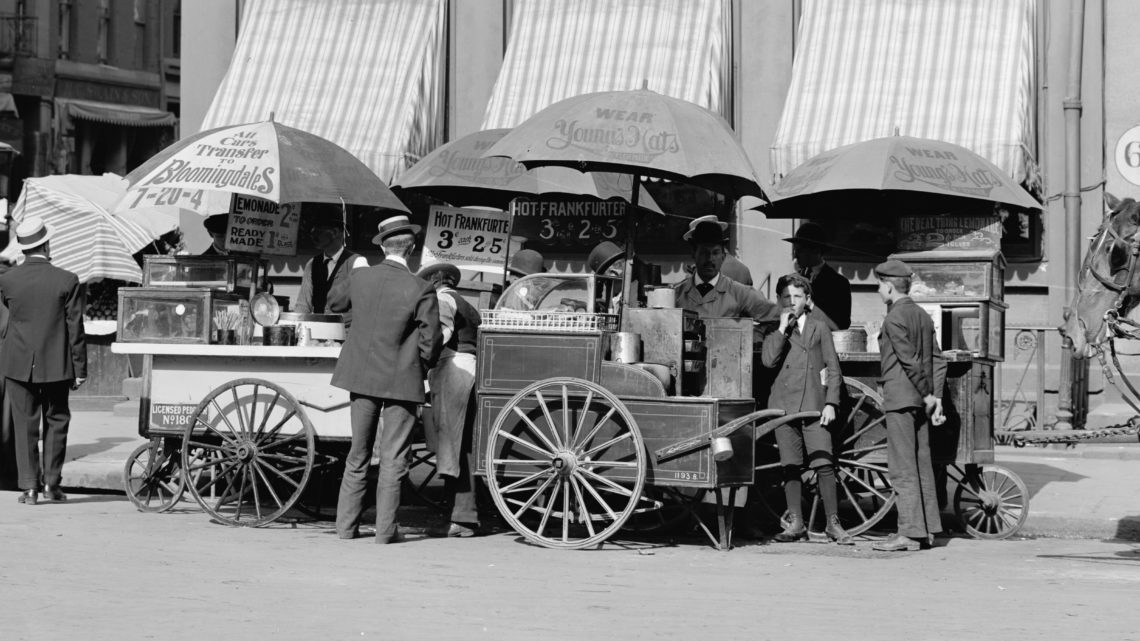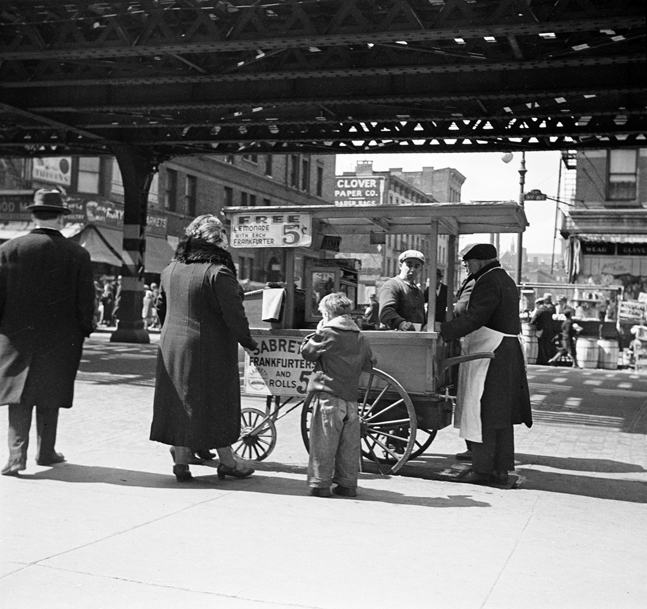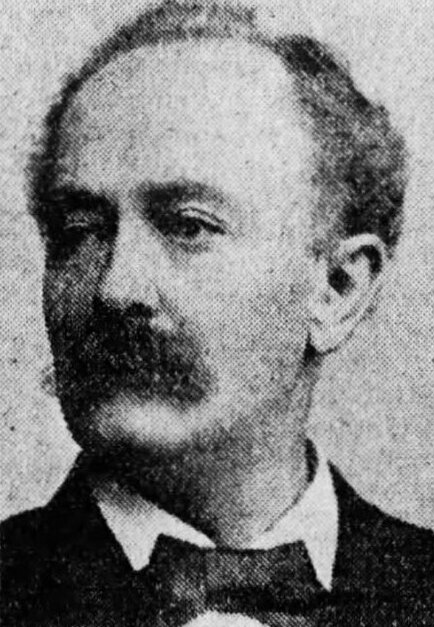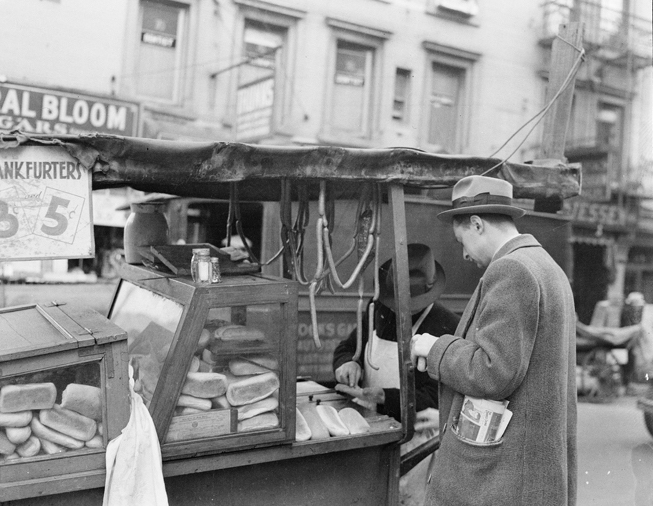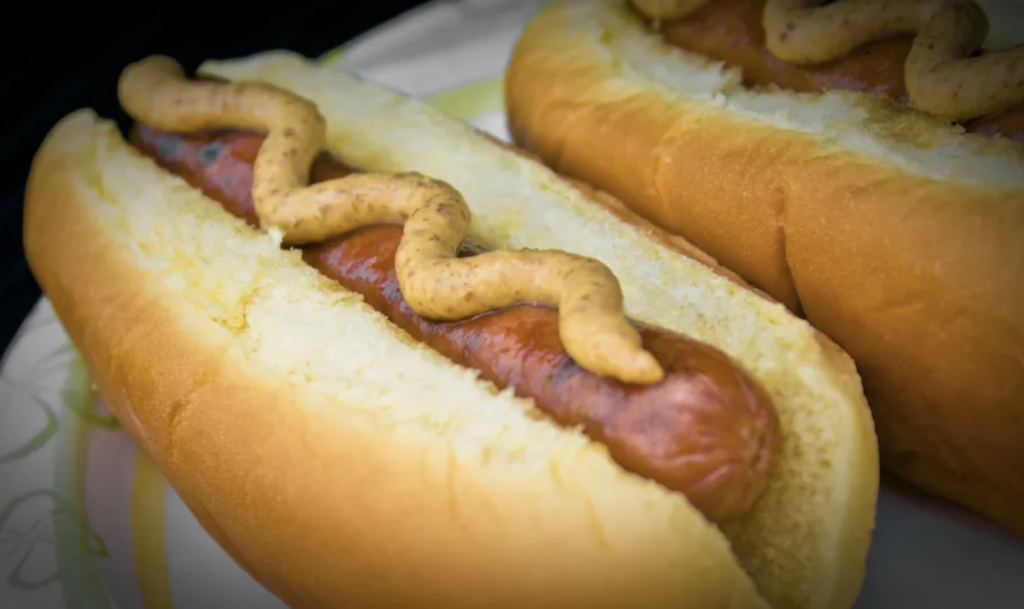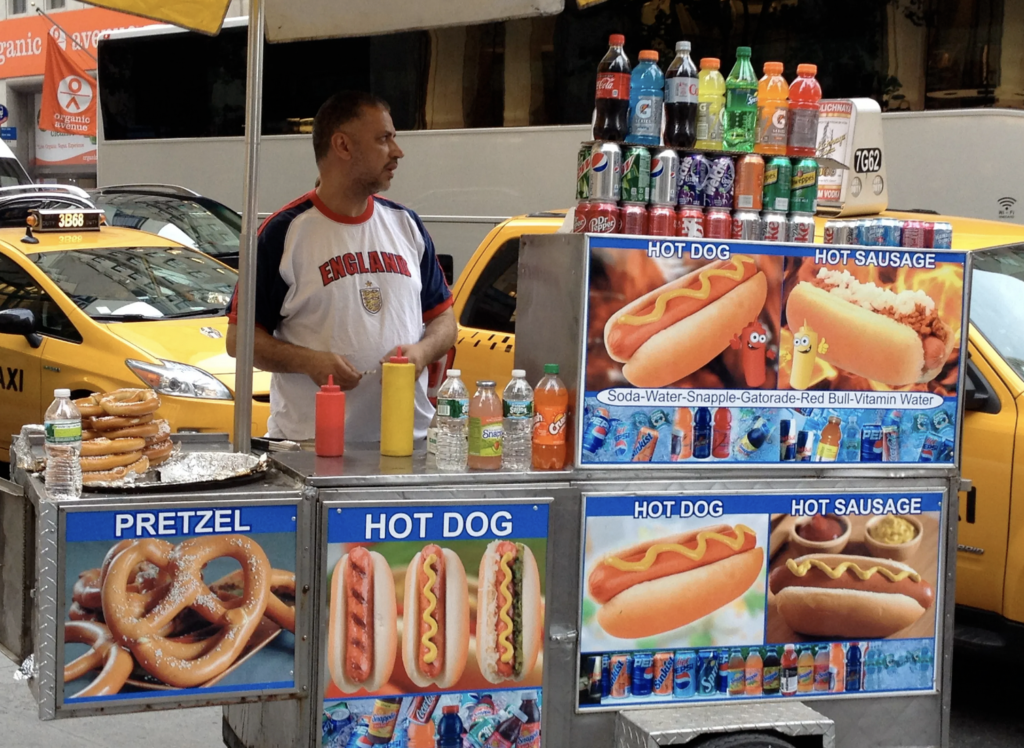Venu d’Allemagne, popularisé par des émigrants sur le sol américain, ce petit sandwich est à tout jamais associé à New-York.
New York, the city of excess. With its vast parks, noisy avenues, endlessly spectacular museums and constant bustle both day and night, it’s easy to forget that for thousands of emigrants, the Big Apple was also the gateway to the American continent.
Starting in the late 19th century, some twelve million European immigrants landed at Ellis Island, at the mouth of the Hudson River in New York Bay. Among them was one Charles Feltman, who hailed from Hanover in Germany. He was a man with a nose for business, and in 1865 he opened a bakery in Brooklyn. He also sold his fare in Coney Island, a beach resort located south of Brooklyn, at the end of the railway line.
Like (almost) all Germans of his time, Feltman arrived in the States carrying the secrets of the Frankfurter Würstchen sausage, whose recipe was widely known. Made from pork and spices, the sausage is smoked at a low temperature then simmered in water for 8 minutes.
Frankfurters were soon being sold from makeshift stands in New York, as a simple way for people to make a little money to live off. However, it was Charles Feltman who had the idea of pairing the sausage with a small bread roll – the snack was a hit with Coney Island customers, and soon Feltman had earned enough to open his own restaurant in Brooklyn. Feltman’s Ocean Pavilion was a seafood restaurant; his customers were affluent New Yorkers, but Feltman was also eager to find a solution for the working-class people who got off the train in Coney Island and needed something cheap to eat. As legend holds, it was here that he had the idea of serving the sausage-bun combo from behind a rolling cart, topped with mustard (as frankfurters were almost always served in Germany).
Another source claims that the hot dog didn’t come from New York at all, but rather St. Louis, Missouri, where another German, Anton Feuchtwanger, sold his sausages with white gloves so that customers wouldn’t burn or dirty their fingers. However, often customers did not return their gloves after they’d finished, so Feuchtwanger switched to a long bun to replace the glove around the sausage.
One thing is certain: it was in New York that dachshunds (“little dogs”) or hot dogs gained popularity, being the perfect snack for workers and baseball fans.
In the city and across the US, the hot dog became so popular that when King George VI of England visited in 1939, President Roosevelt even had them included on the menu for the state dinner (history records that the British monarch enjoyed his meal). Today there are still hundreds of hot dog vendors in New York, operating metal carts from 5th Avenue to the financial district. Typically a dog costs only around two dollars, or perhaps a little more with added toppings: sauerkraut (the German influence still present), relish, chilli, ketchup, etc…
150 years after it was created in the Big Apple – or in St. Louis – the hot dog remains an icon of the New York street food scene and identity.

